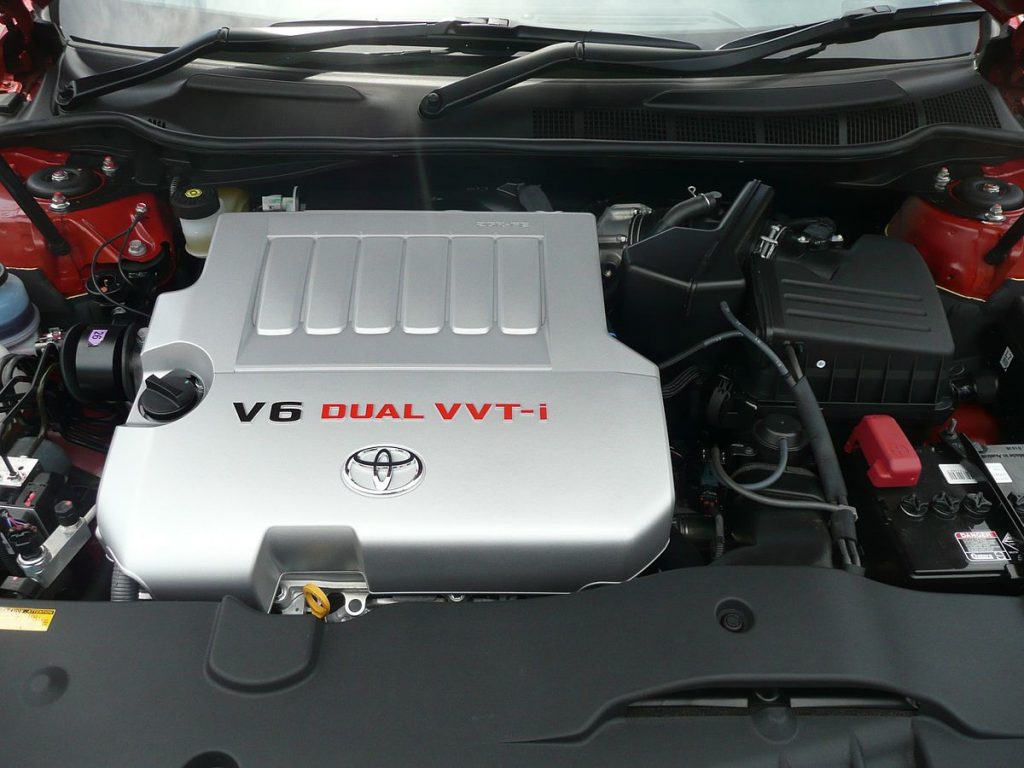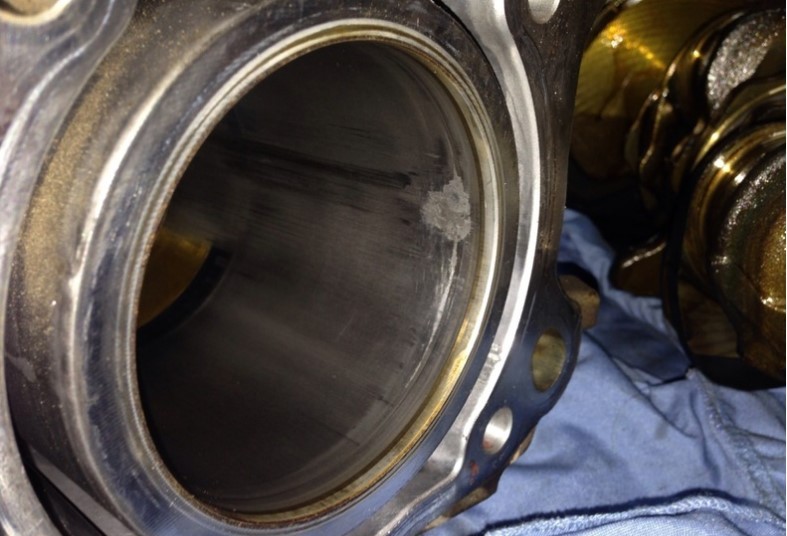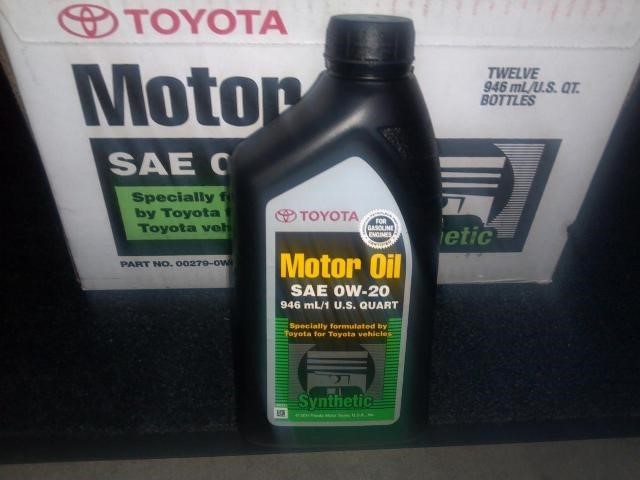
Toyota 3GR-FSE engine
Content
The most common and most massive engine in Japanese Toyotas is the Toyota 3GR-FSE. A variety of values of technical characteristics indicates the demand for products of this series. Gradually, they replaced the V-engines of earlier series (MZ and VZ), as well as inline six-cylinders (G and JZ). Let's try to understand in detail its strengths and weaknesses.
The history of the engine and what cars it was installed on
The 3GR-FSE motor was created by the famous Toyota corporation at the beginning of the 20th century. Since 2003, it has completely ousted the famous 2JZ-GE engine from the market.

The engine is characterized by elegance and lightness. Aluminum cylinder block, cylinder head and intake manifold significantly reduce the weight of the entire engine. The V-shaped configuration of the block reduces its external dimensions, hiding 6 rather voluminous cylinders.
Fuel injection (directly into the combustion chamber) made it possible to significantly increase the compression ratio of the working mixture. As a derivative of such a solution to the issue - an increase in engine power. This is also facilitated by a special device of the fuel injector, which produces injection not in a jet, but in the form of a fan flame, which increases the completeness of fuel combustion.
The engine was installed on various cars of the Japanese automobile industry. Among them are Toyota:
- Grown Royal & Athlete с 2003 г.;
- Mark X with 2004;
- Mark X Supercharged from 2005 (turbocharged engine);
- Grown Royal 2008 г.
In addition, since 2005 it has been installed on the Lexus GS 300 produced in Europe and the USA.
Technical specifications
The 3GR series contains 2 engine models. Modification 3GR FE is designed for transverse arrangement. Design features somewhat reduced the power of the unit as a whole, but the differences are insignificant.
The technical characteristics of the Toyota 3GR FSE engine are clearly presented in the table.
| Winemaking | Kamigo Plant |
| Engine make | 3GR |
| Years of issue | 2003- n.vr. |
| Cylinder block material | aluminum |
| Supply system | injector |
| A type | V-shaped |
| Number of cylinders | 6 |
| Valves per cylinder | 4 |
| The piston stroke, mm | 83 |
| Cylinder diameter, mm | 87,5 |
| Compression ratio | 11,5 |
| Engine displacement, cubic meters cm. | 2994 |
| Engine power, hp / rpm | 256/6200 |
| Torque, Nm / rpm | 314/3600 |
| Fuel | 95 |
| Environmental standards | 4 euros |
| Engine weight | - |
| Fuel consumption, l / 100 km - town - track - mixed | 14 7 9,5 |
| Oil consumption, gr. / 1000 km. | Until 1000 |
| Engine oil | 0W-20 5W-20 |
| The amount of oil in the engine, l. | 6,3 |
| Oil change is carried out, km. | 7000-10000 |
| Engine operating temperature, deg. | - |
| Engine resource, thousand km. - according to the plant - on practice | - more 300 |
Reading carefully, you can pay attention that the manufacturer does not indicate the life of the engine. Perhaps the calculation was based on the possibility of exporting the product, where operating conditions will differ markedly in a number of indicators.
The practice of using 3GR FSE motors shows that with proper operation and timely maintenance, they nurse more than 300 thousand km without repair. this will be discussed in more detail a little later.
Motor reliability and typical problems
Anyone who has to deal with the Toyota 3GR FSE engine is primarily interested in its inherent positive and negative aspects. Despite the fact that Japanese motors have established themselves as fairly high-quality products, flaws were also found in them. Nevertheless, statistics, reviews of those who operate and repair them unequivocally agree on one thing - in terms of reliability, the 3GR FSE engine is worthy of the level of world standards.
Of the positive aspects, the most often noted:
- reliability of rubber seals of all parts;
- quality of fuel pumps;
- reliability of fuel injection nozzles;
- high stability of catalysts.
But along with the positive aspects, unfortunately, there are also disadvantages.
Let's consider them in more detail:
- abrasive wear of the 5th engine cylinder;
- high oil consumption for "waste";
- increased risk of breakdown of cylinder head gaskets and the likelihood of warping of cylinder heads.

Up to about 100 thousand km. there are no complaints about the engine. Looking ahead a little, it should be noted that sometimes they do not occur even after 300 thousand. So, we understand in more detail.
Increased abrasive wear of the 5th cylinder
Problems with it occur quite often. For diagnostics, it is enough to measure the compression. If it is below 10,0 atm, then the problem has appeared. Measures must be taken to eliminate it. As a rule, this is an engine repair. Of course, it is better not to bring the motor to such a state. There is a possibility for this. You just need to read the “Vehicle Owner's Manual” very carefully and strictly follow its requirements.
Moreover, it is desirable to reduce some of the parameters recommended by her. For example, the air filter needs to be replaced 2 times more often than recommended. That is, every 10 thousand km. Why? It is enough to compare the quality of Japanese roads and ours and everything will become clear.
Exactly the same picture is with the so-called "consumables". It is enough to replace the high-quality oil recommended by the manufacturer, as the occurrence of problems is just around the corner. Saving on oil will have to fork out for repairs.
High oil consumption for "waste"
For new engines, it lies in the range of 200-300 gr. per 1000 km. For the 3GR FSE line, this is considered the norm. When it rises to 600-800 per 1000, then you have to take active measures. In terms of oil consumption, perhaps one thing can be said - even Japanese engineers are not immune from mistakes.
Breakdown of the cylinder head gasket
The danger of breakdown of cylinder head gaskets and the possibility of warping of the heads themselves are associated with poor-quality maintenance of the engine, especially its cooling system. Not every motorist, when servicing the engine, removes the first radiator to flush the cavity between the radiators. But the main dirt is collected there! Thus, even because of this “little thing”, the engine does not receive sufficient cooling.
Thus, one conclusion can be drawn - timely and correct (in relation to our operating conditions) maintenance of the engine at times increases its efficiency and reliability.
Extending life...with maintenance
In detail, all issues of servicing the Toyota 3GR FSE engine are disclosed in special literature. But it is necessary to say a few words about the importance of this event.
Many motorists consider its 5 cylinder to be one of the problems of the motor. Thanks to this, already after 100 thousand km. run, it becomes necessary to overhaul the engine. Unfortunately it is so. But for some reason, not everyone thinks about the possibility of eliminating this trouble. But many, having skated more than 300 thousand, do not even know where it is located!
Consider measures that extend the life of the engine. First of all, it is cleanliness. Especially cooling systems. Radiators, especially the space between them, clog easily. Thorough flushing at least 2 times a year permanently eliminates this problem. It must be remembered that the internal cavity of the entire cooling system is also prone to clogging. Once every 2 years, its flushing is required.
The lubrication system requires special attention. There should not be any deviations from the manufacturer's requirements in this matter. Oils and filters must be original. Otherwise, penny savings will lead to ruble costs.
And one more recommendation. Taking into account many difficult operating conditions (traffic jams, a long cold period, “non-European” quality of roads, etc.), it is necessary to reduce the time for maintenance. Not necessarily in full, but filters, oil need to be changed earlier.
Thus, by performing only these considered measures, the service life of not only the 5th cylinder, but the entire engine will increase several times.
Engine Oil
How to choose the right engine oil is a question of interest to many motorists. But here it is appropriate to ask a counter question - is it worth bothering with this topic? The “Vehicle Operating Instructions” clearly states what brand of oil and how much it needs to be poured into the engine.


Engine oil 0W-20 meets all the requirements of the manufacturer and is the main one for a car coming off the assembly line. Its characteristics can be found on numerous Internet sites. The recommended replacement is after 10 thousand km.
The manufacturer recommends another type of oil for use as a replacement - 5W-20. These lubricants are designed specifically for Toyota gasoline engines. They have all the characteristics that ensure the reliability of the motors.
Only the use of recommended lubricants will keep the engine running for a long time. Despite numerous recommendations and warnings, some car owners are still wondering what other oil can be poured into the lubrication system. There is only one adequate answer - if you are interested in long-term and flawless operation of the engine - none, except for the recommended one.
Interesting to know. When calculating the oil change period, the following figures are primarily taken into account: a thousand km. vehicle mileage is equal to 20 hours of engine operation. In urban operation for a thousand km. run takes about 50 to 70 hours (traffic jams, traffic lights, long engine idling ...). Taking a calculator, it will not be difficult to calculate how much oil needs to be changed if it contains only an extreme pressure additive designed for 40 thousand km. car mileage. (The answer for those who do not have a calculator is after 5-7 thousand km.).
Maintainability
Toyota 3GR FSE engines are not designed for overhaul. In other words, disposable. But here a little clarification is needed - for Japanese motorists. There are no obstacles for us in this regard.
The need for major repairs is manifested by various signs:
- loss of compression in the cylinders;
- increased fuel and oil consumption;
- unstable operation at different crankshaft speeds;
- increased engine smoke;
- adjustments and replacements of components and parts do not give the expected result.
Since the block is cast from aluminum, there is only one method of restoring it - a cylinder liner. As a result of this operation, the mounting holes are bored, the sleeve is selected to fit and a sleeve is inserted into them. Then the piston group is selected. By the way, you need to keep in mind that the pistons on the 3GR FSE have a different shape for the left and right half-blocks.


The engine repaired in this way, subject to the operating rules, nurses up to 150000 km.
Sometimes, instead of overhaul, some motorists choose another way to restore - replacing a contract (used) engine. How much better it is, it is almost impossible to judge. It all depends on many factors. If we take into account the financial side of the issue, then the price of a contract motor is not always lower than a complete overhaul. For example, according to available data for a certain time, in Irkutsk the cost of a contract engine was one and a half times higher than the cost of repairs.
In addition, when purchasing a contract unit, there is no full confidence in its performance. It is possible that it also requires major repairs.
Change or not
The valve stem seals are replaced if a bluish exhaust appears after starting the engine and with increased oil consumption. This is also indicated by the oiling of the electrodes of the spark plugs.


The time to replace the caps depends on the quality of the engine oil. The most realistic is 50-70 thousand km. run. But here it is also necessary to remember that accounting is best kept in engine hours. Thus, it is best to perform this operation after 30-40 thousand km.
Given their purpose - to prevent oil from entering the combustion chamber - the question of the need to replace the caps should not even arise. Yes, definitely.
Timing Chain Replacement
Replacement is recommended to be done at specialized service stations. The process itself is not complicated, but requires special skills and knowledge in engine repair. The basis of the replacement will be the correct installation of the chain in its place. The main thing is to combine the timing marks when installing it.
If this rule is violated, very big troubles may occur, leading to serious engine damage.
The chain drive is highly reliable, and typically up to 150000 km. does not require intervention.


Owner feedback
As always, how many owners, so many opinions about the engine. Of the many reviews, most of them are positive. Here are some of them (the style of the authors is preserved):
The engine is native, with a mileage of 218 thousand (the mileage is most likely native, since the previous owner gave me a small notebook with the car, in which everything is meticulously recorded, starting from a mileage of 90 thousand: what, when, changed, which manufacturer, etc. Something like a service book). Does not smoke, runs smoothly, without extraneous noise. There are no fresh oil smudges and traces of sweating. The sound of the motor is nicer and more bassy than the 2,5. It’s a very beautiful sound when you start it cold :) It pulls great, but (as I said earlier, during acceleration it’s a little sluggish than 2,5 engines and here’s why: I talked with various Markovods and they said that on Treshki the brains are stitched for comfort and not for an aggressive start with slippage.
As far as I know, if you change the oil on time and follow the car, then you can drive with this engine for 20 years without problems.
Why didn't you like FSE? Less consumption, more power. And the fact that you change mineral oil every 10 thousand is the reason that the motor killed. The 5th cylinder does not like this attitude. If you do not know how to use technology, it does not mean that the technology is bad!
Making the final conclusion about the Toyota 3GR FSE engine, we can say that with proper operation it is reliable, powerful and economical. And early engine repairs have to be done by those who allow various deviations in the implementation of the manufacturer's recommendations.

